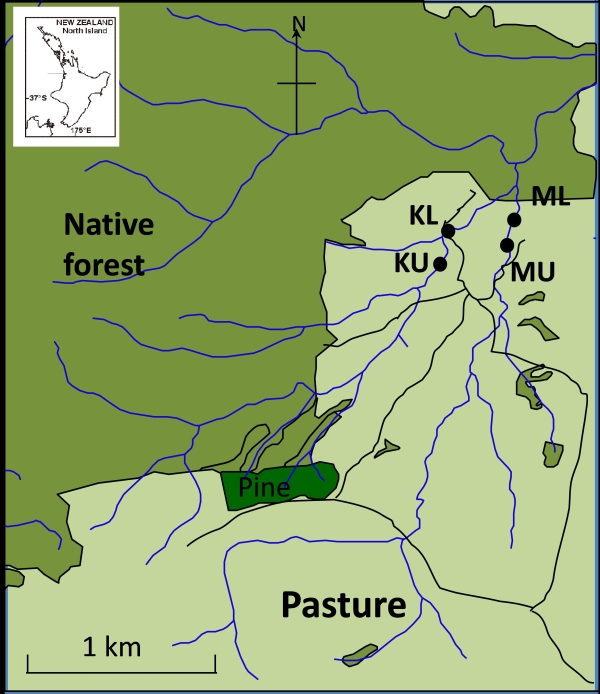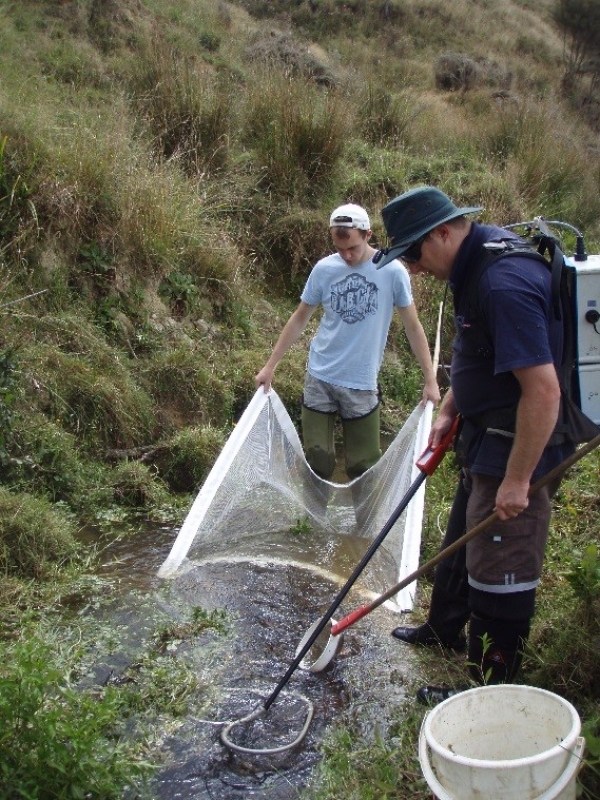Wood is a key component in most pristine New Zealand streams. NIWA has investigated the important ecological and physical role played by wood in creating and enhancing habitat heterogeneity (particularly cover habitat) and retaining organic matter.
Wood has been removed or lost from many agricultural stream channels, mainly due to deforestation, and modelling studies indicate significant hysteresis (hundreds of years) in restoration of natural wood volumes from inputs by restored riparian forests. A NIWA study added tree fern structures to four sites in two gravel-bed pasture streams at Whatawhata, Waikato (Figures 1 and 2) to explore the practicality, timescales and effectiveness of this technique for overcoming restoration hysteresis.
Addition of tree fern structures to these agriculturally impacted streams immediately enhanced habitat diversity, increased flow complexity and transient water storage, and improved artificial organic litter retention. Many of the changes persisted for over one year, resulting in a redistribution of fish populations (Figures 3 and 4), redistribution of sand/silt (Figure 5) and increased retention of solute and particulate nutrients (C, N, P) (Figure 6).
Retention of artificial floating leaves, submerged leaves and floating sticks increased at all sites following wood additions, but increased retention of natural material was not particularly obvious after wood was added, largely reflecting a lack of source material in the catchment.
The physical changes to habitat were not associated with increased fish density or diversity at the reach scale. However, one year after wood additions, up to 59 per cent of fish caught in the reach preferentially used the wood as cover habitat.
Placement of some logs where soils were susceptible to erosion required further lining to prevent scouring around the wood. Following the modification, most wood at most sites remained in place through high flows >98x the long-term annual median average (1992–2013).
In general, addition of wood to these agriculturally impacted sites resulted in some significant improvements to stream condition. The use of wood for enhancing restoration is a valuable tool that could be used in combination with other restoration techniques such as riparian planting and fencing, stock exclusion and stock crossings.
Location of the four stream sites used for the wood addition study.
Wood installation in Kiripaka Stream. The floating dowels shown were used to determine if installed wood would further enhance retention of organic matter. Photo by A Wright-Stow.
Electric fishing to determine how many fish were present and what type of habitat they were residing in (Photo:A Wright-Stow).
Graph showing how up to 59 per cent of fish caught up to one year after addition were associated with wood, despite the wood only representing between 2 and 4 per cent of total site water surface area.
Changes in the amount of sand/silt, large wood and small wood before, six weeks after and one year after addition of wood at the four study sites. Sand and silt can impact stream fish and invertebrates by blocking gills, smothering food resources and reducing amount of habitat.



